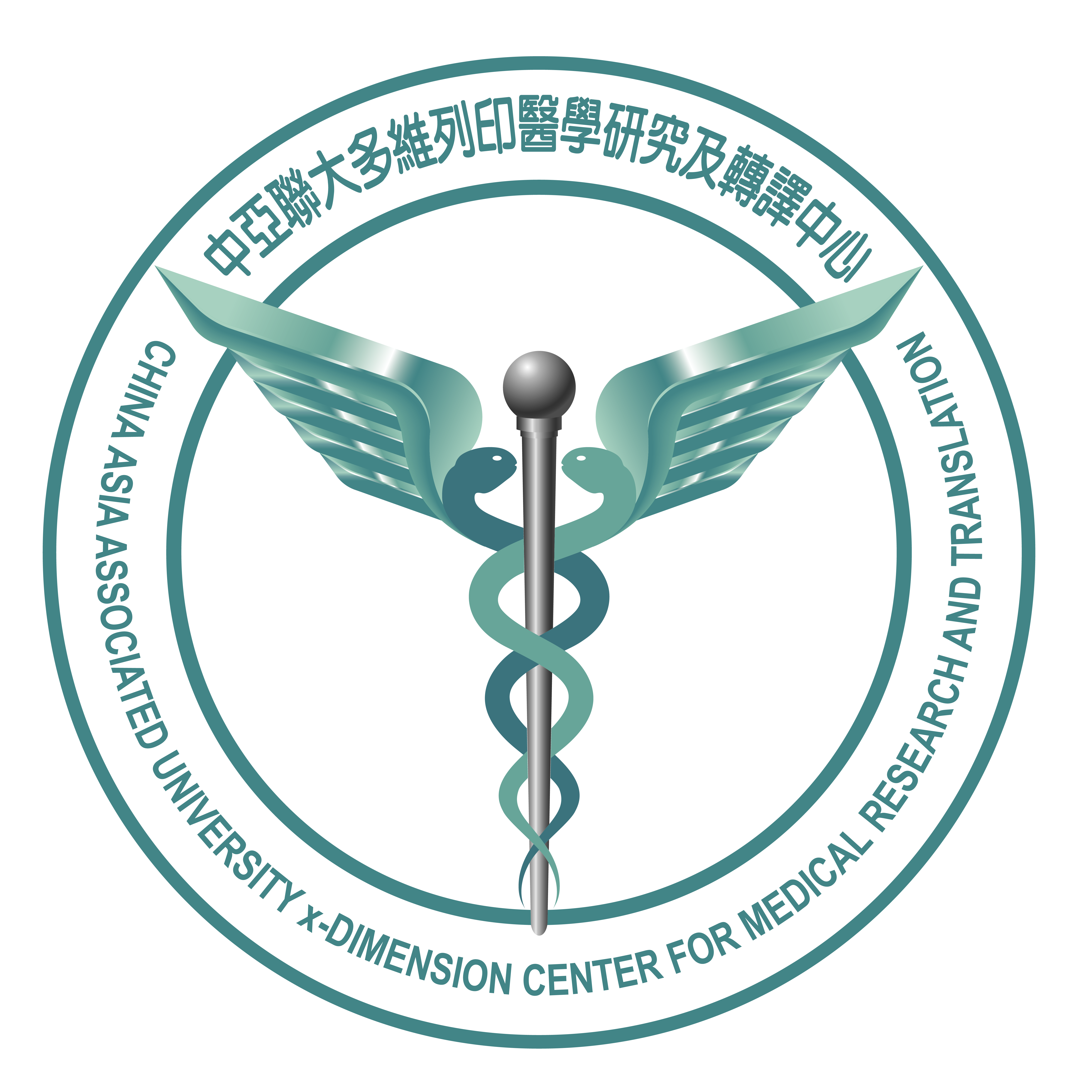
Chimei Medical Center
Booth No:A012
Chimei Medical Center
An Artificial Intelligence System of Early Predicting Successful Weaning Ventilator
Chimei Medical Center
Booth No:---
Chimei Medical Center
An Artificial Intelligence System of Early Predicting Successful Weaning Ventilator
Chimei Medical Center
Booth No:---
Chimei Medical Center
Wireless flow trend monitoring and warning system
Chimei Medical Center
Booth No:---
Chimei Medical Center
Multi-functional clothing for keeping babies wrapped
Chimei Medical Center
Booth No:---
Chimei Medical Center
A Novel Nasopastric Tube with Wireless Chip
China Medical University & China Medical University Hospital/Professor Sheng-Teng Huang Team
Booth No:A031
China Medical University & China Medical University Hospital/Professor Sheng-Teng Huang Team
Traditional Chinese medicine (TCM) is the primary option of alternative medicine in Taiwan. Among various TCM treatment approaches, concentrated Chinese Medicine Granules (CCMG) products are the leading options since they are covered by National Health Insurance. In clinical practice, however, the dosage and ratio of these extracts are not comparable to those of crude drugs learned from school or ancient TCM literatures. The differences of dosage may cause the discrepancy of treatment efficiency. The combination of multiple formulas in one prescription may also lead to repetition of some herbal ingredients, which may correlate with potential side effects or toxicity.Artificial Intelligence for Prescription of Chinese Herbal Medicine is the collaborative model developed by Chinese Medical University and Taipei Medical University. The goal of this system is to validate dosage conversion and prescription simplification of CCMG products by text mining among the certificates of Chinese herbal medicine from Ministry of Health and Welfare. We further create the data visualization system to facilitate clinical use among TCM practitioners. The simplification of prescription may help TCM practitioners to save time and cost in pharmaceutical dispensing.
China Medical University Hospital
Booth No:M804
China Medical University Hospital
China Medical University Hospital works in close collaboration with the world’s top universities, medical centers, and research institutes. The remarkable accomplishments of China Medical University have been well recognized by the world: ranks 60th in Asia University Rankings 2019, the first among private universities in Taiwan.
CMU Healthcare System strives for excellence in healthcare. We invest our efforts in developing top-notch medical technologies, such as stem cell therapy, gene therapy, and AI Hospital. Meanwhile, our projects on “Hsinchu International Health Science Park” and the “Shuinan International Health Science Campus” together create an environment for developing cutting edge biomedical research, industry-academia collaboration platforms and startups.
As frontline in central Taiwan, CMUH continues to build on a strong basis for acute and critical disease healthcare. The faculty are committed to permanent objectives of instruction, research, and medical services. Above all, we also put great emphasis on social responsibility. Moreover, we envision to be an “excellent world-class medical center with the best integration of western and Chinese medical” and “world-renowned high-tech biomedical park.”
China medical university hospital/ Orthopedics Dr. Tsung-Li Lin team
Booth No:064
China medical university hospital/ Orthopedics Dr. Tsung-Li Lin team
Chronic periprosthetic infection is a devastating complication following total knee arthroplasty, and two-stage revision is gold standard for treatment due to high infection eradication rates (as high as 80–90%). The first stage includes removal of the prostheses, debridement, and temporary implantation of an antibiotic-loaded cement spacer to treat the infection. The second stage includes removal of the spacer and re-implantation of the prostheses after the infection control. The articulating spacer may provide better range of motion, improved functional outcome, and easier subsequent reimplantation. However, due to the rough design or unstable mechanical structure of the spacer which was hand-made by surgeons or sold in the market in Europe and the United States, several articulating spacer-related mechanical complications had occurred. These problems might lead to further surgery, poor functional outcomes, prolonged treatment courses during interim stage, and difficulty in reimplantation. We use 3D printing technology based on the retrieved knee prosthesis: including “3D scanning”, “reverse engineering”, “computer-aided design” technology to optimize and improve the structure of the spacer to reduce mechanical complications; and use “computer-aided manufacturing” technology to produce several sizes of trials and re-sterilized silicone molds, which simplify the surgical procedures during surgery. Our study found that the “computer-aided design and manufacturing”-articulating spacer in two-staged revision of periprosthetic knee infection significantly controlled infection, improved clinical outcomes, increased range of motion, and decreased mechanical complications.
China medical university hospital/x-Dimension Center for Medical Research and Translation
Booth No:054
China medical university hospital/x-Dimension Center for Medical Research and Translation
Although, the prevention and treatment of cancer have been greatly improved over the recent years, cancer remains one of the greatest threats to human health. The search for treatment methods that are more efficient and specific had been vigorously investigated, especially for aiming to transition tumor environment scientific knowledge from in bench to bedside. Through the deepened understanding toward tumors, PS models with high specificity to truthfully reflect the cause, metastasis and treatment strategies. This project aims to create an automated tumor-on-a-chip (TOC) through patients’ cancer cells, combined with 3D printable, biodegradable polymers, for the strategizing of customized cancer treatments for precise medicine. In the development progress of PS biofabricated TOC, our team cooperated tightly with clinical Physicians and Surgeons to understand the clinical reality and the decision thinking of treatment strategies. With multi-disciplinary collaboration, our team applied and received several key patents such as biofabricated TOC, manufacturing method of 3D cell blocks and printable bioink. Those key patents and manufacturing knowhow can be integrated together and construct a bio-mimicking micro-environment for PS precision medicine. We believe that 3D bioprinting technology could have helped medicine industry to achieve the goal of precision medicine, in the end, the Taiwan medical technology could be enhanced through innovative precision devices and advanced to the worldwide.
China Medical University/Assoc. Prof. Yuh-Pyng Sher's team
Booth No:A133
China Medical University/Assoc. Prof. Yuh-Pyng Sher's team
ADAM9 protease inhibitors act as novel anti-cancer drugsEffectively inhibiting cancer metastasis and prolonging patient survival is still an unmet medical need. The membrane protein ADAM9 is a key protease for the metastasis of various cancers. It is related to the poor prognosis of cancer patients and can be used as the target for cancer treatment. Therefore, the developed drugs targeting the ADAM9 protease function can have broad applications. Our cross-field cooperation team of China Medical University and Hospital is comprised of basic researchers, drug development experts, a physician-scientist, a bioinformatics expert, and a manager from a pharmaceutical biotechnology company. We have developed small compound inhibitors to inhibit the activity of ADAM9 protease and showed that they can reduce the cell growth of lung cancer, breast cancer, and pancreatic cancer. Moreover, we have proved that ADAM9 inhibitors have effective anti-cancer effects in preclinical animal models to reduce the metastasis of lung cancer, breast cancer, and pancreatic cancer with very low toxicity. It can strengthen the anti-cancer effect of existing chemotherapy or immunotherapy. The application scope of the technology is to strengthen the combination of existing chemotherapy or immunotherapy with ADAM9 inhibitors to reduce cancer recurrence.
2. Animal toxicology testing


